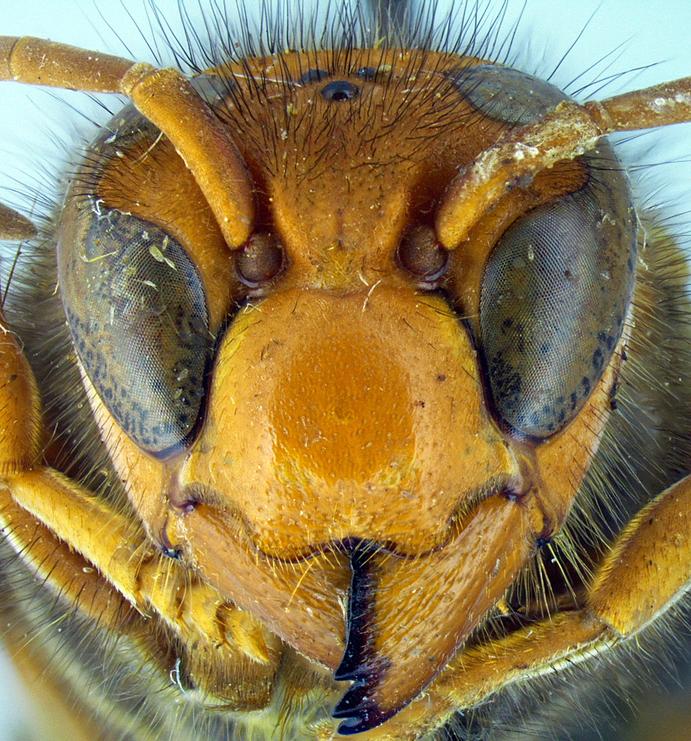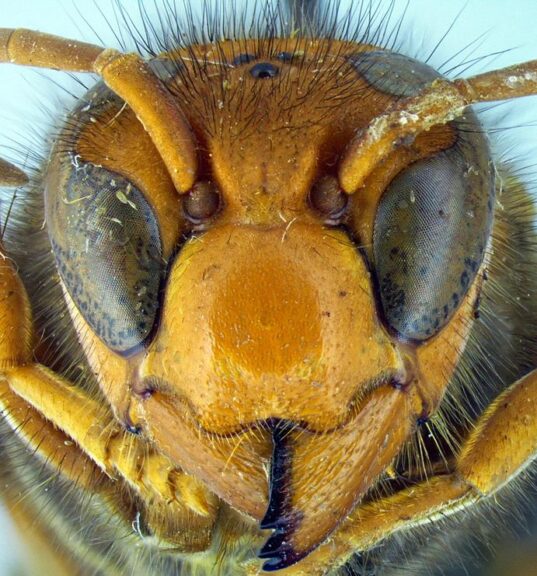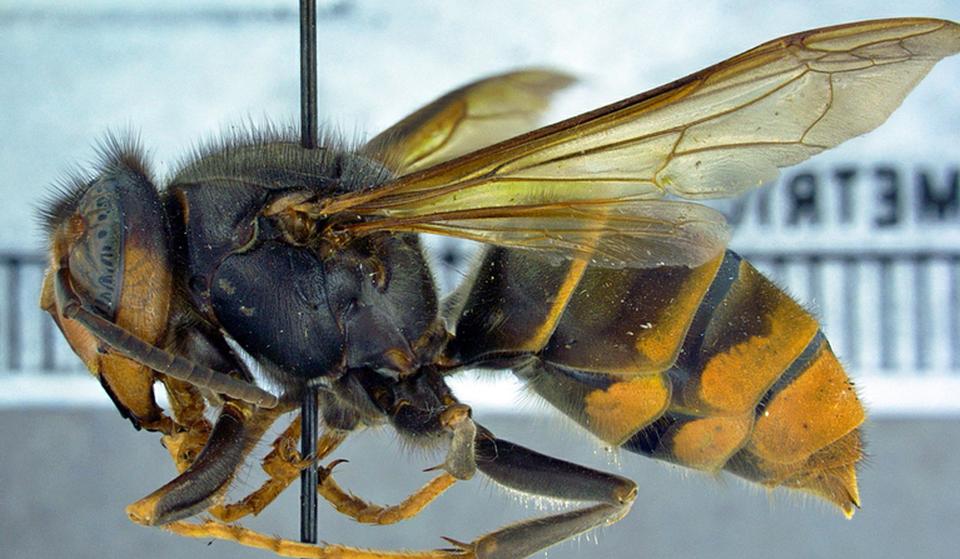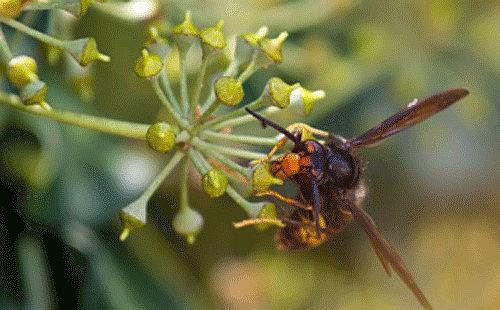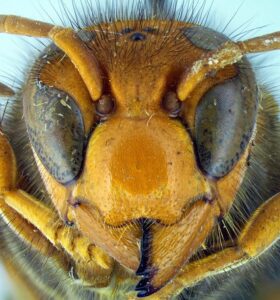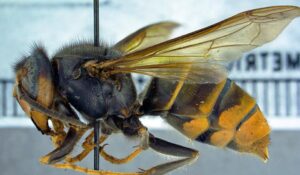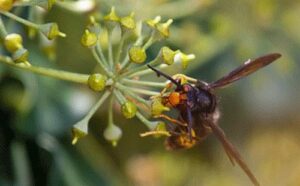Heads up! Invasive Yellow-Legged Hornet Could Be Big Trouble for Honey Bees
As if honey bees don’t have enough challenges, add another one to the list. The first U.S. sighting of the yellow-legged hornet (Vespa velutina) was confirmed last week by the Georgia Department of Agriculture. A backyard beekeeper in Savannah captured and reported the two hornets. Presence of the new predatory hornet could mean trouble for local bee populations and beyond if not held in check.
The yellow-legged hornet preys on honey bees and honey bee larva. It is smaller, but similar to the Vespa mandarinia, known by its nickname the “murder hornet,” which has a distinct orange mark on its head. V. mandarinia is native to Asia has been the target of eradication efforts in Washington State and British Columbia after individual hornets were first discovered there in 2019.
The yellow-legged hornet is best identified by its yellowish-white-colored legs, is about 1.2 centimeters to 3 centimeters long, and has a broad orange-yellow face with large, prominent eyes. The thorax and abdomen are mostly black with a single yellow section near the end of the abdomen, according to UF/IFAS informational documents.
The yellow-legged hornet is often mistaken with the commonly seen European hornet, Vespa crabro, which is not a substantial threat to bees. The European hornet does not have yellow/white legs. European hornet samples should not be submitted, if possible.
“Honey bees in North America have no natural defenses against the yellow-legged hornet, so keeping this species from making a home in Florida is of the utmost
importance to our honey bee populations and thus our food supply,” says Amy Vu, state specialized program Extension Agent for the University of Florida/IFAS Honey Bee Research and Extension Laboratory.
To report a sighting of this invasive pest in Georgia, click here and fill out the form.
If a suspected yellow-legged hornet is sighted in Florida, email [email protected].




